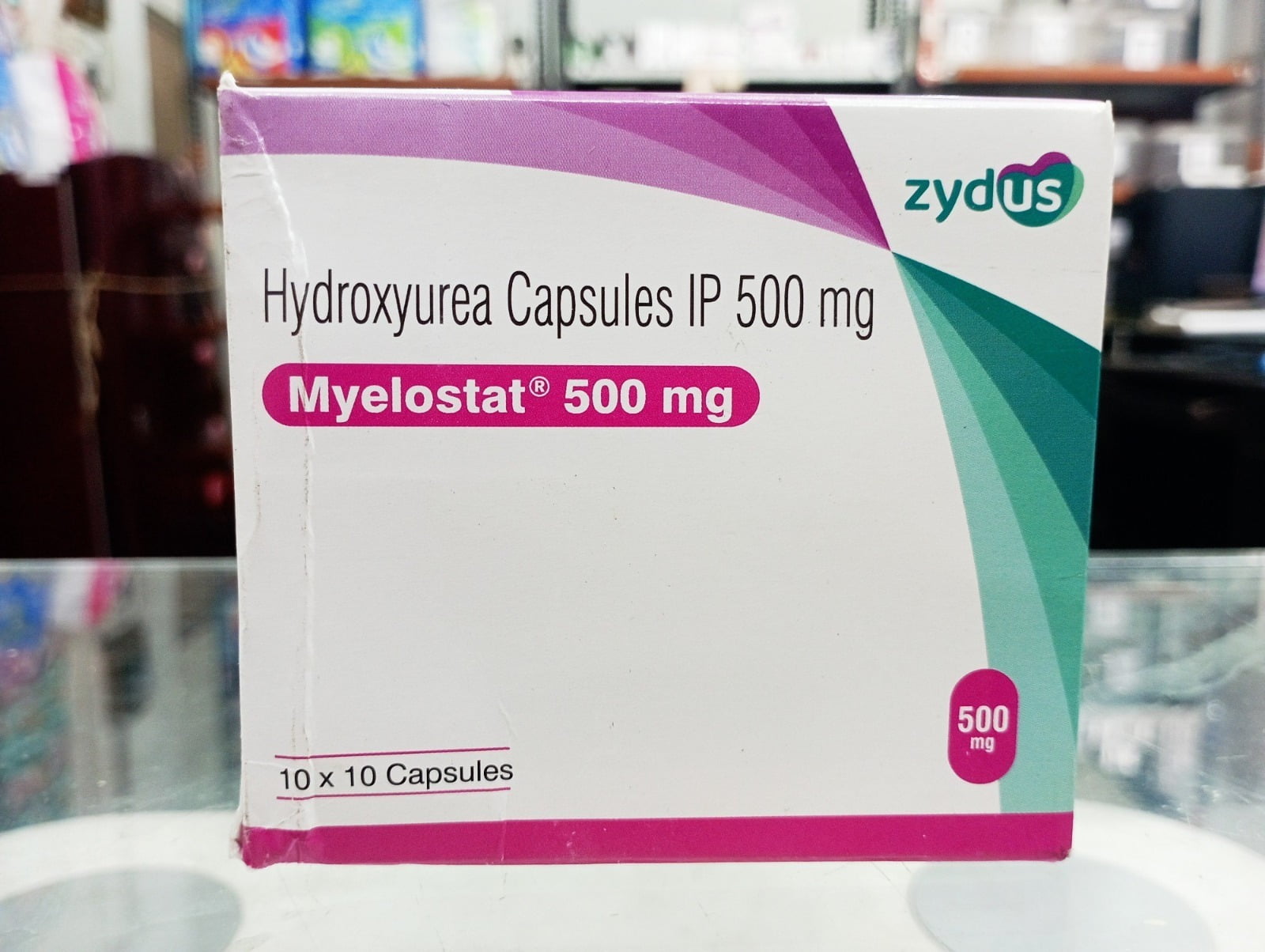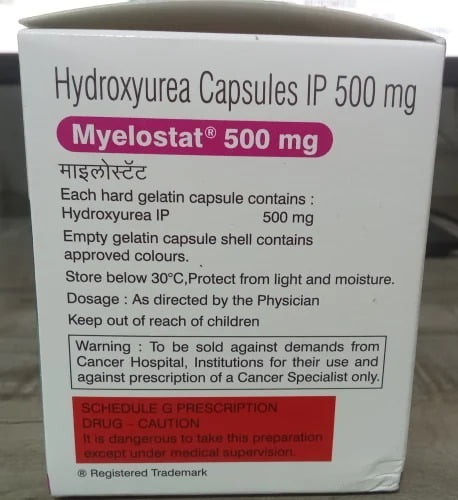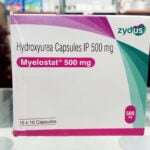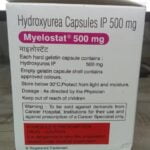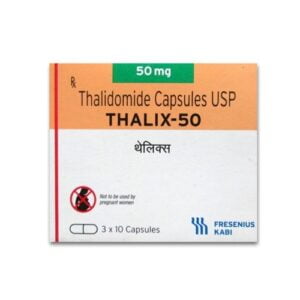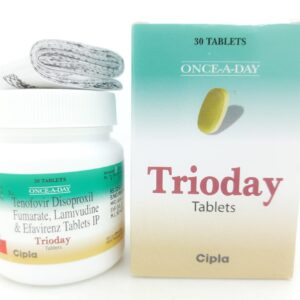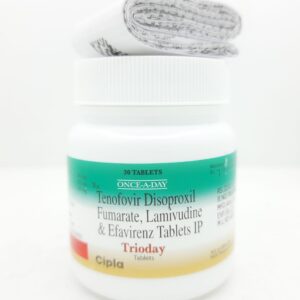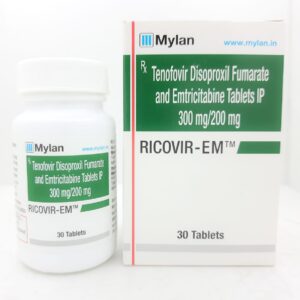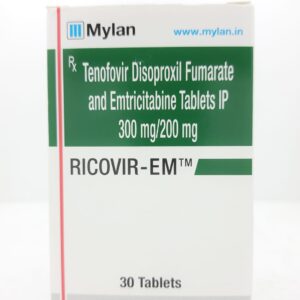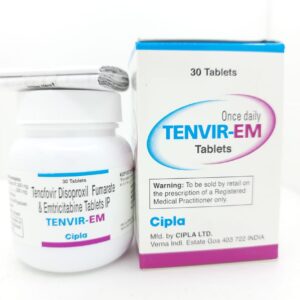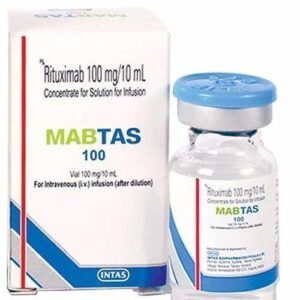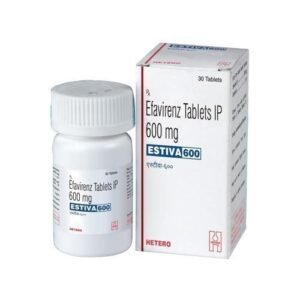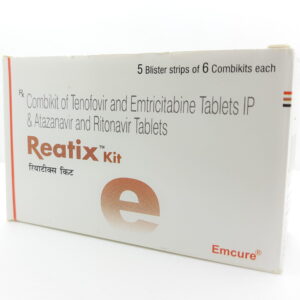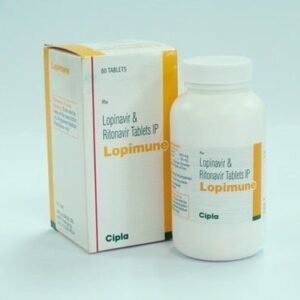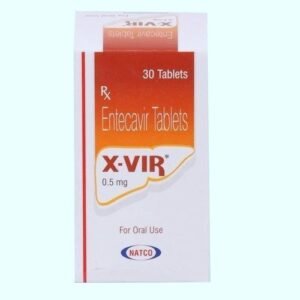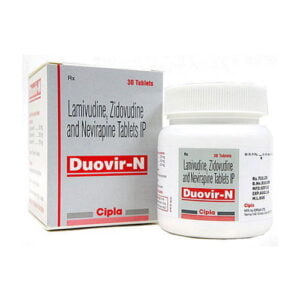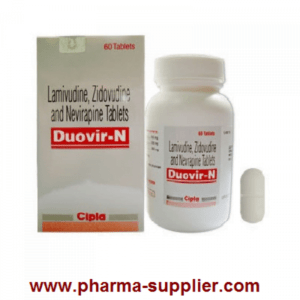Last Updated on September 8, 2024 by admin
Introduction to Myelostat 500mg
Myelostat 500mg, known by its chemical name hydroxyurea, is a medication prominently used for the treatment of certain medical conditions. It is primarily prescribed for managing sickle cell anemia, a genetic disorder that affects the shape and function of red blood cells. Myelostat 500mg works by reducing the frequency of painful sickle cell crises and the need for blood transfusions. Additionally, it has applications in the treatment of certain leukemias and other forms of chronic myeloproliferative disorders.
The essence of Myelostat 500mg lies in its chemical composition, featuring a simple structure that disrupts DNA synthesis. This mechanism of action makes it effective in preventing abnormal red blood cells’ formation in sickle cell disease and slowing the proliferation of malignant cells in blood cancers. Myelostat 500mg is manufactured by several pharmaceutical companies worldwide, with significant contributions from prominent firms like Bristol-Myers Squibb. The drug’s distribution spans multiple countries, ensuring accessibility for patients requiring this essential treatment.
DMyelostat 500m goxia received FDA approval for the treatment of sickle cell disease back in 1998, recognizing its efficacy and safety in helping patients manage this chronic condition. The FDA’s approval further attests to Myelostat 500mg potential benefits in reducing complications and improving the quality of life for those afflicted by sickle cell anemia. Over the years, its use has been expansively researched and documented, solidifying its place in medical regimens for conditions characterized by abnormal cell production and growth.
Understanding Myelostat 500mg and its applications is crucial for healthcare providers and patients alike, as it opens pathways to effective management of diseases that significantly impact everyday life. The knowledge about Myelostat 500mg history, composition, and the scope of its use forms the foundation for informed medical decisions and empowers those dealing with complex health issues to seek appropriate and timely treatment options.
Manufacturer : ZYDUS CADILA
USES OF Myelostat 500
- Ovarian cancer
- Polycythemia vera
- Chronic myeloid leukemia
- Cervical cancer
- Head and neck cancer
- Sickle cell anemia
Myelostat 500mg, also known by its generic name hydroxyurea, is a medication primarily used in the management of sickle cell anemia, a genetic blood disorder characterized by the production of abnormally shaped red blood cells. These sickle-shaped cells can obstruct blood flow, leading to pain episodes and potential organ damage. By increasing fetal hemoglobin levels and reducing the adhesion of red blood cells, Myelostat 500mg helps decrease the frequency and intensity of pain crises in individuals with sickle cell anemia.
Studies have demonstrated Myelostat 500mg efficacy in managing sickle cell anemia. A significant study published in the New England Journal of Medicine reported that patients treated with hydroxyurea had a noticeable reduction in pain crises, hospitalizations, and the need for blood transfusions. This study underscores the critical role of Myelostat 500mg in improving the quality of life for those affected by this condition.
Beyond its primary application in sickle cell anemia, Myelostat 500mg is also prescribed for off-label uses by healthcare providers. One such off-label use includes the treatment of chronic myelogenous leukemia (CML), a type of cancer that originates in the bone marrow and results in the production of abnormal white blood cells. Myelostat 500mg acts by inhibiting the DNA synthesis in rapidly dividing cells, thereby slowing down the progression of CML. Similarly, it is occasionally used in managing other myeloproliferative disorders, where its mechanisms help control abnormal cell proliferation.
Additional off-label prescriptions of Myelostat 500mg include its use in treating polycythemia vera, a condition characterized by an excess of red blood cells. By reducing the elevated red blood cell count, Myelostat 500mg helps mitigate the risk of complications such as blood clots. Although these uses might not be as extensively documented as its application for sickle cell anemia, available clinical data and case studies provide a foundation for these therapeutic effects.
In conclusion, while Myelostat 500mg is predominantly recognized for its impact on sickle cell anemia, its benefits extend to several other medical conditions. Its applications in both primary and off-label contexts underline the versatility of this medication in addressing various hematological and oncological disorders.
Directions for Use
Proper usage of Myelostat 500mg is crucial to ensure its efficacy and minimize potential risks. Medical professionals generally tailor Myelostat 500mg dosages according to the patient’s specific medical condition, age, and overall health profile. Typically, for adults with sickle cell anemia, dosages usually start at around 15 mg/kg daily. Over time, doctors may adjust the dosage based on individual response and tolerance. Pediatric dosages tend to vary and should always be determined by a healthcare provider.
Myelostat 500mg can be taken with or without food. However, taking it with food may reduce the likelihood of stomach upset, a common side effect. Consistent timing of the dose is essential; taking it at the same time each day helps maintain an even level of the medication in the bloodstream, thereby optimizing its effectiveness. If a dose is missed, it should be taken as soon as remembered, unless it is almost time for the next dose. In such a case, the missed dose should be skipped to avoid doubling up.
The duration of treatment with Myelostat 500mg varies per individual case, but ongoing, long-term use is often required for chronic conditions like sickle cell anemia. Continuous monitoring by healthcare providers is crucial, as it allows for periodic adjustments to the dosage and ensures early detection of any side effects or complications. Regular blood tests may be necessary to monitor the drug’s impact on blood cells and kidney function.
To maximize the benefits of Myelostat 500mg while minimizing risks, patients should adhere strictly to their prescribed regimen and avoid self-adjusting their dosage. Open communication with healthcare providers is crucial, especially regarding any side effects or concerns that arise during treatment. Following these guidelines will aid in achieving the therapeutic benefits of Myelostat 500mg and contribute to improved management of the underlying medical conditions.
BENEFITS OF Myelostat 500
Myelostat 500mg , the brand name for hydroxyurea, has been widely recognized for its significant therapeutic benefits, particularly for patients suffering from sickle cell anemia. One of the primary advantages of Myelostat 500mg is its ability to alleviate the painful vaso-occlusive crises commonly experienced by patients with this condition. By increasing fetal hemoglobin production, Myelostat 500mg helps to reduce the sickling of red blood cells, thereby decreasing the frequency of these painful episodes.
Furthermore, Myelostat 500mg has been shown to improve the overall quality of life for individuals with sickle cell anemia. Clinical studies have demonstrated that patients treated with Myelostat 500mg experience fewer hospitalizations and a reduced need for blood transfusions. This not only lessens the physical and emotional burden on patients and their families but also contributes to a decrease in healthcare costs associated with managing the disease.
In addition to its immediate benefits, Myelostat 500mg offers long-term positive outcomes for consistent users. Regular use of Myelostat 500mg has been linked to prolonged survival rates in patients with sickle cell anemia. The medication achieves this by mitigating the chronic complications related to the disease, such as acute chest syndrome and strokes, which are common contributors to morbidity and mortality among these patients.
Real-world examples underscore the transformative impact Myelostat 500mg can have. For instance, one patient testimonial highlighted how continuous use of Myelostat 500mg over several years led to a marked reduction in the need for emergency room visits and an improved overall health status. Another case study pointed out that a child with sickle cell anemia, who had frequent crises pre-treatment, managed to maintain near-normal school attendance and participate actively in sports after starting Myelostat 500mg therapy.
These examples illustrate that the benefits of Myelostat 500mg extend beyond clinical measures, touching on various aspects of daily life and offering hope and improved outcomes for many patients dealing with the challenges of sickle cell anemia.
Storage Information
To maintain the efficacy and longevity of Myelostat 500mg , it is essential to adhere to proper storage guidelines. This medication should be stored at a temperature of 20°C to 25°C (68°F to 77°F). Temporary excursions are permissible between 15°C and 30°C (59°F and 86°F). It is crucial to avoid exposing Myelostat 500mg to extreme temperatures as they can affect its chemical stability and potency.
Humidity control is another critical factor in the storage of Myelostat 500mg . The medication should be kept in a dry environment, away from areas that may experience high humidity, such as bathrooms or kitchens. Excessive moisture can lead to the degradation of the medication. Utilizing airtight containers or moisture-resistant packaging can help protect Myelostat 500mg from ambient humidity.
Light exposure should also be minimized. Store Myelostat 500mg in its original container, which is designed to protect it from light. This will prevent any potential photodegradation that can reduce the effectiveness of the medication. Ensure that the storage area is dark or has minimal light exposure, which can sometimes be achieved by using dark cupboards or storage boxes.
Regarding expired medication, it is important not to use Myelostat 500mg past its expiration date, as its safety and efficacy may be compromised. Proper disposal practices should be followed to prevent any environmental and health risks. Do not dispose of Myelostat 500mg by flushing it down the toilet or throwing it in the trash. Instead, utilize local medication take-back programs or consult with your pharmacist for guidance on safe disposal methods.
Adhering to these storage guidelines ensures that Myelostat 500mg remains effective throughout its intended shelf life, thus safeguarding its therapeutic benefits for users. Proper storage practices are pivotal in maintaining both efficacy and safety of the medication.
Medicinal Benefits and General Health Impacts
Myelostat 500mg , known for its principal use in treating conditions like sickle cell anemia, offers a range of medicinal benefits that extend beyond its primary applications. At the core of its effectiveness is Myelostat 500mg active ingredient, hydroxyurea, which exerts a profound impact on the molecular and cellular levels of the body. By inhibiting ribonucleotide reductase, an enzyme critical for DNA synthesis, hydroxyurea effectively reduces the production of abnormal red blood cells, which are typically rigid and sickle-shaped in sickle cell anemia. This leads to a significant decrease in the frequency of painful crises and overall disease progression.
One of the notable benefits of Myelostat 500mg is its ability to induce fetal hemoglobin production. The elevation of fetal hemoglobin in red blood cells can prevent hemoglobin molecules from sticking together, thus reducing the sickling and deformation of cells. This mechanism not only alleviates symptoms but also improves oxygen delivery throughout the body, enhancing patients’ overall health and quality of life. Users of Myelostat 500mg often experience fewer hospital visits and reduced need for blood transfusions, underscoring the drug’s potential in chronic disease management.
Furthermore, ongoing research indicates that Myelostat 500mg may have secondary health benefits. Some studies suggest that patients undergoing Myelostat 500mg treatment may exhibit improved vascular function due to its anti-inflammatory properties. The drug’s ability to lower white blood cell count and platelet aggregation contributes to these effects, potentially diminishing the risk of blood clots and inflammatory complications.
Myelostat 500mg influence on systemic health also extends to reduced endothelial damage. By mitigating oxidative stress and endothelial dysfunction, Myelostat 500mg helps maintain vascular integrity, a crucial component in preventing cardiovascular diseases. Additionally, the drug has shown promise in treating other conditions characterized by rapid and abnormal cell growth, such as certain cancers, owing to its capacity to inhibit DNA synthesis in malignant cells.
Overall, while Myelostat 500mg primary use remains in the treatment of sickle cell anemia, its broader medicinal benefits underscore its potential in managing various conditions and improving general health, highlighting its significance in contemporary medical therapeutics.
Drug Warnings and Safety Advice
Myelostat 500mg is a medication particularly used in the management of sickle cell anemia, featuring prominently in treatment protocols due to its efficacy. However, its use is accompanied by several warnings and precautions that must be diligently observed to ensure patient safety. This section delves into these critical considerations, helping patients and healthcare providers alike navigate the complexities associated with Myelostat 500mg.
Firstly, Myelostat 500mg is contraindicated in pregnant women due to potential teratogenic effects. It poses a significant risk to the developing fetus, thus, effective contraception is necessary for women of childbearing potential during treatment. The implications of Myelostat 500mg for older adults also merit careful scrutiny. Due to reduced metabolic function and potential co-morbidities in elderly patients, there is an elevated risk of adverse reactions. As such, starting Myelostat 500mg at a lower dose and close monitoring for any signs of toxicity is advised.
Another essential factor to consider is the need for ongoing medical monitoring. Regular blood tests are crucial during Myelostat 500mg treatment to monitor for myelosuppression, a condition where bone marrow activity is decreased, reducing blood cell production. Patients need to report any signs of infection, unusual bleeding, or bruising promptly. Adjustments in dosing may be necessary based on blood count results.
It is also imperative to note that Myelostat 500mg usage may introduce risks of developing secondary malignancies. While the benefits usually outweigh these risks in the context of severe sickle cell disease, patients should be counseled on the symptoms of new or unusual lumps that could indicate leukemia or other cancers directly related to the medication use.
General safety advice includes adherence to prescribed dosages and schedules to avoid compounding adverse reactions. Avoidance of alcohol is recommended as it can potentiate Myelostat 500mg hematological effects. Maintaining effective communication with healthcare providers is key to promptly addressing any side effects or complications, ensuring a more safe and effective treatment experience.
By observing these drug warnings and safety advice, the benefits of Myelostat 500mg can be maximized while minimizing potential risks, fostering better health outcomes for individuals dealing with sickle cell anemia.
Drug Interactions and Interactions Checker List
The effectiveness and safety of Myelostat 500mg (hydroxyurea) can be significantly impacted by its interactions with other substances. These can include over-the-counter medications, prescription drugs, and even herbal supplements. It is crucial for patients and healthcare providers alike to be aware of these potential interactions. Among the medications that may interact with Myelostat 500mg , anticoagulants, antiretrovirals, and certain anticonvulsants have been identified as noteworthy. These interactions can alter the efficacy of Myelostat 500mg or increase the risk of adverse effects.
Over-the-counter medications such as non-steroidal anti-inflammatory drugs (NSAIDs) and acetaminophen should be used cautiously. Anticoagulants, which are commonly prescribed to prevent blood clots, may have an increased risk of bleeding when taken concurrently with Myelostat 500mg . Antiretrovirals, used for treating HIV, can either reduce the effectiveness of Myelostat 500mg or amplify its side effects. Therefore, monitoring and dose adjustments are necessary if a patient is on these medications. Additionally, anticonvulsants, prescribed for seizures, can potentially decrease the blood levels of Myelostat 500mg , necessitating careful management.
Patients should also be cautious about herbal supplements and dietary interactions. For example, St. John’s Wort, a herbal remedy often used for depression, can interfere with Myelostat 500mg absorption and metabolism, leading to reduced therapeutic effects. Moreover, certain foods may interact with Myelostat 500mg , particularly those rich in pyridoxine (vitamin B6) which can either inhibit or enhance its action, depending on the individual case.
Understanding these interactions is essential for the safe use of Myelostat 500mg . Various online tools and apps, such as interaction checker lists, can provide valuable assistance. These tools allow patients to input their list of medications, supplements, and even dietary habits to generate a comprehensive report on potential interactions. Consulting with a healthcare provider before starting or stopping any medication or supplement is recommended to ensure safety and optimal therapeutic outcomes.
SIDE EFFECTS OF Myelostat 500
Myelostat 500mg , a medication primarily used to treat certain types of cancer and sickle cell anemia, carries the potential for both common and rare side effects. It is essential for patients to be well-informed about these possible side effects to manage their treatment effectively.
Common side effects of Myelostat 500mg can include nausea, vomiting, loss of appetite, and diarrhea. These symptoms are typically mild and often manageable with standard over-the-counter medications or dietary adjustments. Furthermore, some patients report experiencing mild fatigue or headache, which usually diminishes as the body adjusts to the medication.
More severe and less common side effects may include signs of infection such as fever, chills, persistent sore throat, and unusual bleeding or bruising. These symptoms are indicative of potential low blood cell counts, and it is critical for patients experiencing these signs to seek immediate medical attention. Additionally, Myelostat 500mg can sometimes cause serious liver problems, which might manifest through symptoms such as yellowing of the skin or eyes, dark urine, or severe abdominal pain.
Long-term side effects of Myelostat 500mg might involve more comprehensive monitoring and management. Continuous use of Myelostat 500mg has been linked to the potential development of secondary cancers, although this is rare. Long-term monitoring by healthcare providers is essential to detect any early signs of such conditions.
It is advised that patients consult with their healthcare providers when they encounter side effects, regardless of their severity. For the management of mild side effects at home, maintaining adequate hydration, consuming a balanced diet, and getting ample rest can be beneficial. Furthermore, regular blood tests and liver function tests are recommended to monitor the body’s response to the medication.
Timely communication with healthcare providers and adherence to recommended monitoring protocols can significantly help in mitigating the risks associated with Myelostat 500mg and ensuring the safe use of the medication.
Common side effects of Myelostat 500
- Hematological disorder
- Gastrointestinal disorder
- Eating disorder
- Azoospermia (absence of sperms)
- Decreased appetite
- Fever
- Oligospermia (low sperm count)
- Skin cancer
- Bone marrow suppression
- Hallucination
- Convulsion
- Peripheral neuropathy (tingling and numbness of feet and hand)
- Pulmonary fibrosis
- Pulmonary edema
- Pancreatic inflammation
- Liver toxicity
- Cutaneous vasculitis
- Increased uric acid level in blood
HOW TO USE Myelostat 500
HOW Myelostat 500 WORKS
Myelostat 500mg , a brand name for hydroxyurea, exerts its therapeutic effects through a multifaceted mechanism that is both complex and well-studied. Understanding how Myelostat 500mg is absorbed, metabolized, and excreted, as well as its pharmacodynamics, can illuminate its efficacy in treating sickle cell anemia and other conditions.
Once ingested, Myelostat 500mg is rapidly absorbed from the gastrointestinal tract into the bloodstream. It achieves peak plasma concentrations roughly 1-4 hours after oral administration. The bioavailability of Myelostat 500mg is relatively high, ensuring that sufficient quantities reach systemic circulation to exert therapeutic effects. Plasma protein binding is minimal, indicative of extensive tissue distribution.
The primary mode of action of Myelostat 500mg in sickle cell anemia centers around its ability to stimulate the production of fetal hemoglobin (HbF). Elevated levels of HbF dilute the concentration of sickle hemoglobin (HbS), thereby reducing the polymerization that leads to sickle-shaped red blood cells. Consequently, this diminishes the vaso-occlusive events and hemolytic anemia typical of sickle cell crises. Additionally, Myelostat 500mg has a cytotoxic effect on erythroid precursors in the bone marrow, which reduces production of abnormal HbS-laden red cells.
Metabolically, Myelostat 500mg undergoes hepatic metabolism via the enzyme ribonucleotide reductase. This metabolic pathway leads to the production of various nitrogenous urea compounds, which are largely excreted through the kidneys. The drug has a half-life ranging from 3 to 4 hours, making daily dosing regimes effective for maintaining therapeutic levels in the bloodstream.
In other hematologic and oncologic conditions, the cytotoxic and antimetabolic properties of Myelostat 500mg contribute to its efficacy. Myelostat 500mg inhibits DNA synthesis by impairing the conversion of ribonucleotides to deoxyribonucleotides, crucial for cell proliferation. This mechanism is particularly beneficial in treating chronic myelogenous leukemia (CML) and polycythemia vera.
Despite its utility, close monitoring and dosage adjustments are crucial, particularly in patients with renal or hepatic impairment, to avoid potential toxicities. Understanding the intricate mechanisms by which Myelostat 500mg operates ensures safer and more effective clinical use, ultimately benefiting patient outcomes.
General Warnings
When considering the use of Myelostat 500mg , it is crucial to be aware of several general warnings. Myelostat 500mg , primarily utilized in the treatment of certain blood disorders such as sickle cell anemia, can pose significant risks if not used appropriately. The first and foremost precaution is that Myelostat 500mg should only be used under the strict supervision of a healthcare provider. It is not advisable for individuals who are pregnant or planning to become pregnant due to potential harm to the unborn baby. Similarly, breastfeeding mothers should consult their doctors to understand the risks associated with this medication.
Individuals with underlying health conditions such as liver or kidney diseases, infections, or bone marrow suppression should avoid Myelostat 500mg unless specifically recommended by a physician. The adverse effects can exacerbate their conditions, leading to severe health complications. Those who have previously experienced hypersensitivity to hydroxyurea, the active ingredient in Myelostat 500mg , should refrain from its use to prevent allergic reactions.
Signs of overdose on Myelostat 500mg require immediate medical attention. Symptoms may include severe or persistent nausea, vomiting, diarrhea, or unusual bleeding or bruising. Mental health changes such as confusion or hallucinations can also indicate an overdose. Patients are advised to seek emergency medical help if any of these symptoms are observed.
Myelostat 500mg must be administered cautiously and strictly adhere to the prescribed dosage. Misuse, including taking more than recommended, can amplify risks rather than yield faster or more effective results. Patients are encouraged to periodically monitor their blood cell counts and other relevant health parameters as directed by their healthcare provider.
Legal and governmental advisories underscore the importance of following prescribed guidelines while using Myelostat 500mg . Regulatory agencies monitor its dispensation closely due to its potential side effects and interactions with other medications. Patients should ensure all health conditions and current medications are disclosed to their doctors to prevent contraindications.
Safety Advice
When taking Myelostat 500mg , it’s crucial to adhere to general safety measures to avoid potential harm. While the medication serves a beneficial role in treating specific medical conditions, it also necessitates lifestyle adaptations for enhanced safety and efficacy. One of the primary safety guidelines entails avoiding the operation of heavy machinery or driving if Myelostat 500mg influences your concentration or alertness. The medication can cause dizziness or drowsiness, making activities that require full attention risky.
Furthermore, monitoring your health regularly is essential while on Myelostat 500mg . Coordination with your healthcare provider to manage side effects, such as fatigue or gastrointestinal issues, is imperative. To mitigate these side effects, adhere to your prescribed dosage without abrupt changes, as improper use may escalate adverse reactions.
Avoiding alcohol while taking Myelostat 500mg is advisable. Alcohol can exacerbate the side effects of the medication, leading to heightened dizziness or gastrointestinal discomfort. Hydrating adequately and following a balanced diet can also aid in managing side effects effectively. It’s recommended to maintain an open line of communication with your healthcare provider regarding any new or worsening symptoms.
Certain lifestyle modifications may be necessary to ensure optimal treatment outcomes. For instance, smoking cessation is advised since smoking can interfere with the effectiveness of Myelostat 500mg . In addition, abstaining from activities that put added stress on your body, like extreme sports or prolonged exposure to the sun without proper protection, contributes to enhanced safety and health.
A comprehensive understanding of the medication’s contraindications and potential interactions with other drugs is pivotal. Inform your healthcare provider about all the medications you are currently taking, including over-the-counter drugs and supplements, to prevent adverse interactions.
By adhering to these safety tips, you can minimize potential risks and ensure that your treatment with Myelostat 500mg is both safe and effective. Prioritizing your health by making informed and cautious choices contributes significantly to the successful management of your condition.
SAFETY ADVICE
Alcohol
Pregnancy
Breast feeding
Driving
Kidney
Regular monitoring of kidney function test and some blood tests may be advised while you are taking this medicine.
Liver
![]() CHILDREN CAUTION
CHILDREN CAUTION
UNSAFE
Myelostat 500mg Capsule is not recommended for use in children and adolescents below 18 years.
![]() Myelostat 500mg Capsule Habit Forming : NO
Myelostat 500mg Capsule Habit Forming : NO
![]() expert advice
expert advice
All substitutes
- Take it at the same time every day, either with or without food.
- It is advisable to stay hydrated and drink plenty of fluids while taking Myelostat 500mg Capsule.
- Do not skip any dose and complete the course as suggested by your doctor.
- Use an effective method of birth control to avoid pregnancy while taking this medication.
- Your doctor may get regular blood tests done to monitor your electrolyte levels, liver function, blood cell count in your blood.
Diet and Lifestyle Recommendations
For patients undergoing treatment with Myelostat 500mg , adhering to specific dietary and lifestyle guidelines can be pivotal in maximizing therapeutic outcomes. While Myelostat 500mg is primarily utilized to manage certain blood disorders, complementing this medication with an appropriate diet and lifestyle routine can augment its efficacy and ensure overall health stability.
First and foremost, patients are advised to maintain a balanced diet rich in fruits, vegetables, lean proteins, and whole grains. These nutrient-dense foods provide essential vitamins and minerals that aid in maintaining optimal blood health and supporting the body’s immune system. Additionally, proper hydration is crucial; hence, patients should aim to consume at least 8-10 glasses of water daily to assist in the excretion of cellular waste products influenced by Myelostat 500mg .
Patients should be cautious about certain food items that may interfere with Myelostat 500mg effectiveness or exacerbate potential side effects. Foods high in additives and preservatives, processed foods, and excessive caffeine should be limited. Also, moderate to high alcohol consumption should be avoided, as it can affect liver function and interact adversely with the medication.
Concurrently, nutritional supplementation can be beneficial. Supplements containing folic acid, vitamin B12, and iron are often recommended to counteract any deficiencies that might arise, particularly given Myelostat 500mg impact on bone marrow. However, it is essential to consult with a healthcare provider before initiating any supplementation to tailor recommendations to individual health needs.
Beyond diet, incorporating regular physical activity can significantly enhance the physical well-being of patients. Engaging in at least 150 minutes of moderate-intensity exercise weekly, such as walking, swimming, or cycling, can improve cardiovascular health and bolster immune function. That said, activities should not be overly strenuous, especially if patients experience fatigue as a side effect of Myelostat 500mg .
In terms of lifestyle adjustments, stress management techniques such as yoga, meditation, and adequate sleep are vital. Chronic stress and sleep deprivation can undermine the body’s response to medication. Aiming for 7-9 hours of quality sleep per night can facilitate physical recovery and contribute to mental well-being.
Adhering to the above dietary and lifestyle recommendations can substantially support the therapeutic benefits of Myelostat 500mg and improve patients’ overall health. Aligning these practices with professional medical consultation ensures a comprehensive approach to managing conditions requiring Myelostat 500mg.
FAQs about Myelostat 500mg
Q1: What is Myelostat 500mg used for?
A: Myelostat 500mg (Hydroxyurea) is primarily used for the treatment of sickle cell anemia. It helps to reduce the frequency of painful crises and the need for blood transfusions by increasing fetal hemoglobin production.
Q2: When is the best time to take Myelostat 500mg?
A: Myelostat 500mg is usually taken once daily, and it is important to take it at the same time each day. It can be taken with or without food. Follow your healthcare provider’s directions carefully.
Q3: What are the long-term side effects of Myelostat 500mg?
A: Long-term use of Myelostat 500mg can cause:
- Bone marrow suppression (reduced production of blood cells)
- Skin changes (including darkening)
- Increased risk of secondary cancers, particularly leukemia.
Patients on long-term Myelostat 500mg therapy need regular blood tests to monitor for these effects.
Q4: Can you provide a review of Myelostat 500mg?
A: Patients with sickle cell disease often experience a reduction in painful episodes and hospitalizations with Myelostat 500mg treatment. However, the drug requires careful monitoring due to potential serious side effects, and its effectiveness varies between individuals.
Q5: What are the common uses of Myelostat 500mg?
A: Myelostat 500mg is most commonly used to treat:
- Sickle cell anemia to reduce complications like pain crises. It is also sometimes used in certain cancers like chronic myeloid leukemia (CML) or polycythemia vera.
Q6: What is the recommended dosage of Myelostat 500mg?
A: The recommended starting dose is based on weight, typically 15 mg/kg once daily for sickle cell anemia. Your doctor will adjust the dose based on your response and blood counts.
Q7: Is Myelostat 500mg safe to use?
A: Myelostat 500mg is generally safe when used as prescribed, but it requires careful monitoring. Regular blood tests are necessary to check for bone marrow suppression. Your healthcare provider will weigh the benefits and risks before prescribing this medication.
Q8: Does Myelostat 500mg cure HIV infection?
A: No, Myelostat 500mg does not cure HIV infection. It is not an antiviral drug and is used specifically for conditions like sickle cell anemia and some cancers.
Q9: Is Myelostat 500mg safe in pregnancy?
A: Myelostat 500mg is not recommended during pregnancy, as it may cause harm to the unborn baby. Women of childbearing potential should use effective contraception while taking Myelostat 500mg.
Q10: Can Myelostat 500mg be used on children?
A: Yes, Myelostat 500mg can be used in children with sickle cell disease, but the dosage is carefully adjusted based on weight and regular monitoring of blood counts.
Q11: What if I miss a dose of Myelostat 500mg?
A: If you miss a dose, take it as soon as you remember. If it’s close to the time for the next dose, skip the missed dose and do not double the dose to make up for it.
Q12: Can I stop taking Myelostat 500mg?
A: You should not stop taking Myelostat 500mg without consulting your healthcare provider. Stopping treatment may increase the risk of complications from sickle cell disease.
Q13: What are the uses of Myelostat 500mg?
A: Myelostat 500mg is primarily used for:
- Reducing the frequency of painful crises in sickle cell disease. It is also sometimes used in treating certain blood disorders like leukemia.
Q14: Are there alternative medications to Myelostat 500mg?
A: Alternatives to Myelostat 500mg for sickle cell disease include:
- L-glutamine (Endari)
- Voxelotor (Oxbryta)
- Crizanlizumab (Adakveo) Your healthcare provider will decide the best treatment based on your condition.
Q15: Can Myelostat 500mg interact with other medications?
A: Yes, Myelostat 500mg can interact with other medications, particularly those that suppress bone marrow like chemotherapy drugs or antivirals. Inform your doctor about all medications you’re taking.
Q16: How long does it take for Myelostat 500mg to show results?
A: It may take several months to see the full benefits of Myelostat 500mg. Patients may notice a reduction in pain crises after a few months of consistent use.
Q17: What precautions should be taken while using Myelostat 500mg?
A: Important precautions include:
- Regular blood tests to monitor for bone marrow suppression.
- Use of contraception if you are of childbearing age.
- Reporting any unusual symptoms like fever or bruising immediately.
Q18: Where can I get more information about Myelostat 500mg?
A: You can obtain more detailed information from:
Q19: What is the success rate of Myelostat 500mg?
A: Myelostat 500mg has shown success in significantly reducing pain crises and the need for blood transfusions in patients with sickle cell anemia. However, success depends on factors such as regular use and proper monitoring.
Q20: Can Myelostat 500mg cause weight loss?
A: Weight loss is not a common side effect of Myelostat 500mg, but some patients may experience decreased appetite or gastrointestinal symptoms. Consult your doctor if you notice significant weight changes.
Q21: Can Myelostat 500mg cause infections?
A: Yes, Myelostat 500mg can cause bone marrow suppression, which can lower white blood cell counts and increase the risk of infections. Regular blood tests are essential to monitor this risk.
Q22: Can Myelostat 500mg affect fertility?
A: Myelostat 500mg may affect fertility, especially in men, by reducing sperm count. It is important to discuss fertility concerns with your healthcare provider before starting the medication.
Q23: Does Myelostat 500mg improve life expectancy in sickle cell patients?
A: Yes, studies have shown that Myelostat 500mg can improve life expectancy in sickle cell patients by reducing complications like organ damage and pain crises over time.
Q24: Can Myelostat 500mg cause hair loss?
A: Hair thinning or loss has been reported as a side effect of Myelostat 500mg in some patients, though it is not common.
Q25: Can Myelostat 500mg cause skin problems?
A: Yes, Myelostat 500mg can cause skin darkening or ulcers in some cases. These side effects should be discussed with your doctor, especially if they become bothersome.
References:
References:
- Bristol-Myers Squibb Pharmaceuticals Unlimited Company, Electronic medicines compendium (EMC), [Revised on August 2021] [ Accessed on 17 April 2023], https://www.medicines.org.uk/emc/files/pil.271.pdf
- Bristol-Myers Squibb Company, US Food and Drug Administration, [Revised on March 2016] [ Accessed on 17th April 2023], https://www.accessdata.fda.gov/drugsatfda_docs/label/2016/016295Orig1s047,s048Lbl.pdf
- Goodman & Gilman’s, The Pharmacological Basis of Therapeutics, Cytotoxic agents, 12th edition, 2011, 1721.
- KD Tripathi, Essentials of Medical Pharmacology, Anticancer drugs, 7th edition, 2013, 868.
- Rohit Kumar Agarwal et al; Hydroxyurea in Sickle Cell Disease: Drug Review; Indian Journal of Hematology & Blood Transfusion; Published on June 2014; Accessed on 17 April 2023; https://www.ncbi.nlm.nih.gov/pmc/articles/PMC4022916/#__ffn_sectitle

